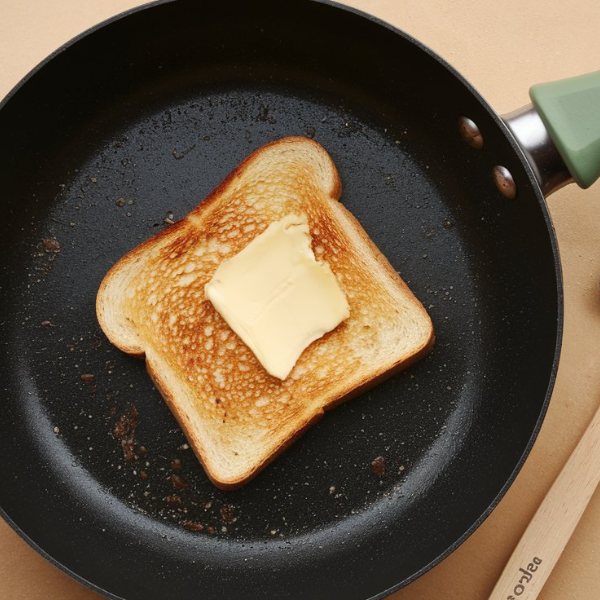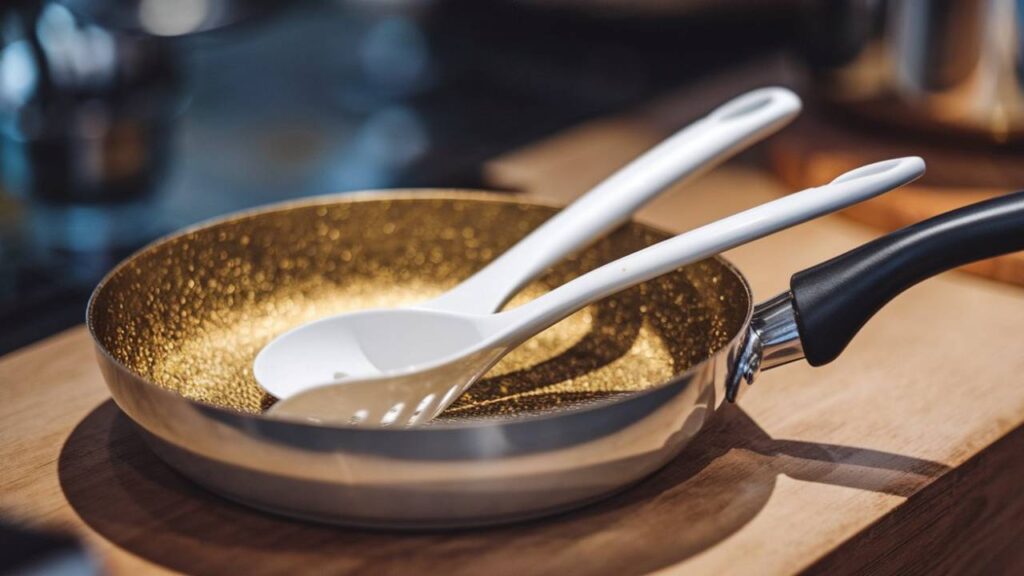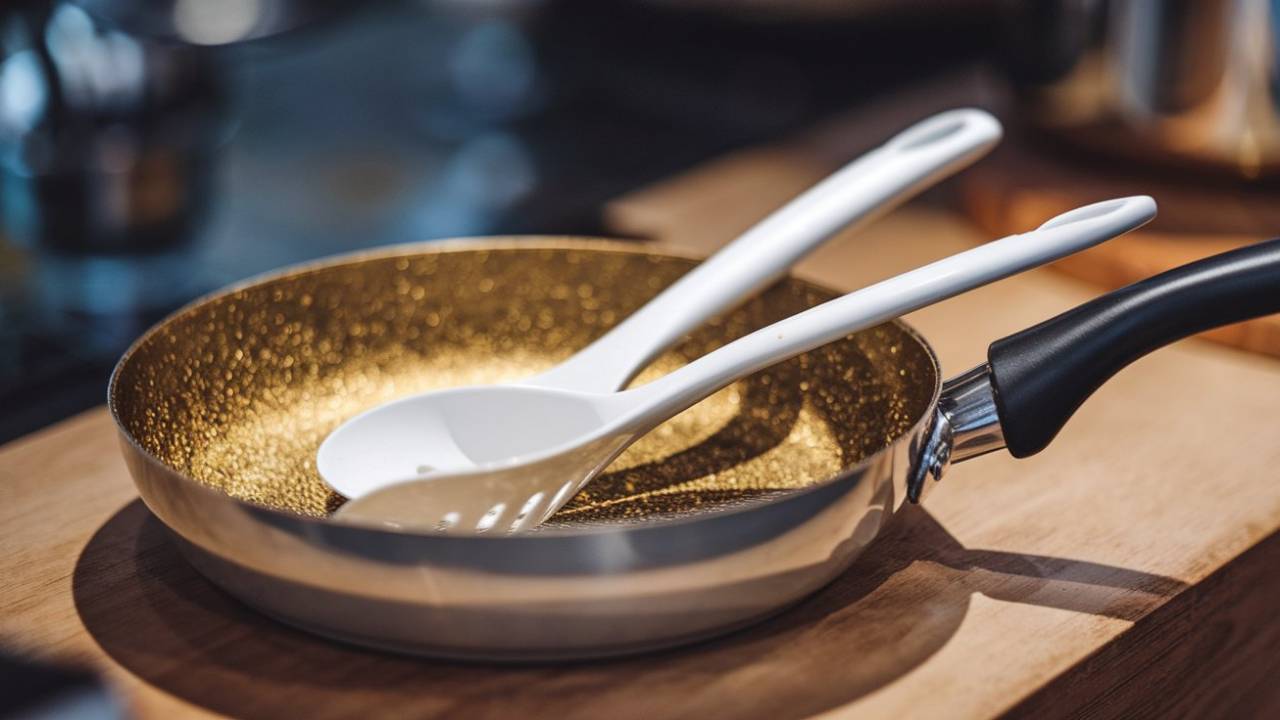Non-stick pans are a staple in modern kitchens, offering convenience and ease for everyday cooking. But many people wonder, is non-stick pan safe for health? This is an important question, as safety concerns often arise regarding non-stick coatings and their effects on health. In this guide, we’ll uncover everything you need to know about non-stick cookware safety and provide expert tips for choosing safe options for healthier cooking.
Is Non-Stick Pan Safe for Health?

1. Understanding Non-Stick Coatings
To answer the question, is non-stick pan safe for health, we need to start with the materials used. Most non-stick pans are coated with polytetrafluoroethylene (PTFE), known for its smooth surface. While PTFE is considered safe for normal use, overheating can cause the coating to release harmful fumes.
Related insight:
- Non-stick cookware is typically safe at temperatures below 500°F.
- Overheating can degrade the coating, which may affect health.
PTFE has been thoroughly tested and approved by regulatory authorities for use in cookware. However, improper use or prolonged exposure to high heat can lead to potential risks. To ensure safety, it’s vital to understand how to use non-stick pans correctly and how they differ from other types of cookware.
2. Look for PFOA-Free Labels
Always opt for non-stick pans labeled “PFOA-free.” PFOA, or perfluorooctanoic acid, was used in older non-stick coatings and is now recognized for its environmental and health risks. Modern cookware avoids this chemical, making it a safer choice for everyday use.
Why choose PFOA-free cookware?
- Reduces exposure to potentially toxic chemicals.
- Ensures compliance with updated safety standards.
PFOA was previously used in the manufacturing process of non-stick coatings but was phased out due to its long-lasting presence in the environment and potential health concerns. When buying non-stick pans, ensure they meet current safety regulations by checking for certifications or labels that confirm they are free from harmful substances.
Expert Tips to Choose Safe Non-Stick Pans
3. Check Temperature Guidelines for Non-Stick Safety
Using non-stick pans at the recommended heat levels ensures their safety. Always cook on low-to-medium heat, as high temperatures can damage the coating and potentially release fumes.
Key points to remember:
- Avoid preheating an empty non-stick pan.
- Use oil or food in the pan before heating.
- Never place non-stick pans in a high-temperature oven.
Cooking at excessive heat can compromise the integrity of non-stick coatings. For example, frying or grilling at high temperatures may cause the coating to deteriorate over time. Stick to the manufacturer’s guidelines to extend the life of your cookware and minimize health risks.
4. Avoid Metal Utensils
Using metal utensils on non-stick cookware can scratch the coating, reducing its lifespan and potentially making it unsafe. Instead, opt for safer options like wooden, nylon, or silicone utensils.
Benefits of proper utensils:
- Prevents damage to the non-stick surface.
- Ensures long-lasting performance and safety.
Scratches and chips in the non-stick surface not only affect cooking performance but can also release small particles into your food. These particles are not typically harmful in small amounts, but frequent ingestion should be avoided. Silicone spatulas and wooden spoons are ideal for protecting your cookware while cooking efficiently.
5. Consider Safe Alternatives to Non-Stick Pans
If you’re still unsure about non-stick cookware, consider exploring safer alternatives. Cast iron, stainless steel, and ceramic-coated cookware are excellent options. These materials are free from chemical coatings and suitable for high-heat cooking.
| Material | Advantages | Drawbacks |
|---|---|---|
| Cast Iron | Durable, naturally non-stick | Requires seasoning regularly |
| Stainless Steel | Non-toxic, long-lasting | May require more oil for cooking |
| Ceramic Coated | Non-stick without chemicals | Less durable over time |
Each material offers unique benefits depending on your cooking style and needs. For example, cast iron pans are ideal for browning and frying but require more maintenance. Ceramic-coated cookware provides a non-stick surface without chemical risks, making it a popular choice for health-conscious cooks.
6. Inspect for Coating Damage
Regularly check your non-stick cookware for scratches, chips, or peeling. Damaged coatings can release small particles into food and compromise safety. Replace any pans showing significant wear.
How to identify damage:
- Visible scratches or peeling on the surface.
- Food starts to stick despite proper use.
- Coating appears discolored or uneven.
If your non-stick pan shows signs of wear, consider recycling or disposing of it according to local regulations. Using damaged cookware can not only affect the quality of your meals but also pose unnecessary risks.
7. Focus on Maintenance and Cleaning
Proper care extends the life of non-stick pans and ensures their safety. Follow these cleaning tips:
- Handwash with warm water, mild soap, and a soft sponge.
- Avoid abrasive scrubbers and harsh detergents.
- Let the pan cool completely before washing to prevent warping.
Cleaning non-stick cookware with abrasive tools can damage the coating. Similarly, sudden temperature changes, such as placing a hot pan in cold water, can cause warping and weaken the material. Treat your pans gently to ensure they remain safe and effective for years to come.
8. Use Non-Stick Pans for Healthier Cooking
Non-stick pans allow for low-fat cooking by requiring little to no oil. This feature is especially beneficial for those seeking healthier meal options without sacrificing flavor or convenience.
Advantages of using non-stick cookware for health-conscious cooking:
- Reduces calorie intake by minimizing oil usage.
- Promotes even cooking and prevents food from sticking.
Non-stick cookware is particularly useful for delicate foods such as eggs, fish, and pancakes. By using minimal oil or butter, you can create healthier versions of your favorite dishes while enjoying the benefits of a non-stick surface.
Additional Tips for Choosing Safe Non-Stick Pans

9. Research Brands and Reviews
Before purchasing non-stick cookware, research brands and read reviews to ensure quality and safety. Look for cookware tested and certified by independent organizations for food safety standards.
10. Invest in High-Quality Cookware
Higher-quality non-stick pans often use advanced technology to improve safety and durability. While these pans may come at a higher price, they are an investment in both health and performance.
11. Replace Pans Regularly
Non-stick pans have a limited lifespan, even with proper care. Most pans last between 2-5 years, depending on usage. Replace old pans to avoid potential risks associated with worn coatings.
Related Article: 9 Reasons Carote Pots and Pans Are a Kitchen Favorite
Conclusion
Non-stick pans can be safe and effective for healthy cooking when used and maintained properly. The answer to is non-stick pan safe for health lies in understanding the materials, choosing PFOA-free options, and following expert tips to ensure safety. By selecting the right cookware and practicing proper care, you can enjoy the benefits of non-stick pans without compromising on health.
FAQ’s
Are non-stick pans harmful to health if used daily?
No, non-stick pans are safe for daily use if used correctly. Avoid overheating and ensure they are free from chips or scratches.
What is the safest alternative to non-stick pans?
Cast iron, stainless steel, and ceramic-coated pans are excellent alternatives. These materials are free from chemical coatings and safe for high-heat cooking.
Can non-stick pans be used for high-heat cooking?
No, non-stick pans are not designed for high-heat cooking. Stick to low or medium heat to prevent damage and maintain safety.
What are the health effects of damaged non-stick coatings?
Damaged coatings can release small particles into food, which may pose health risks over time. Regularly inspect and replace damaged cookware.
Are non-stick pans healthy to use for oil-free cooking?
Yes, non-stick pans are ideal for oil-free or low-fat cooking, promoting healthier meals without sticking issues.


2 thoughts on “7 Expert Tips to Choose Safe Non-Stick Pans for Healthy Cooking”